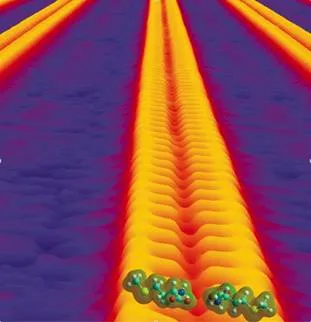Biomolecular Self-Assembly
Bonding and organisation of biomolecules, bio-nonbio interfaces
Small biological molecules such as amino acids or DNA base molecules represent an important class of building blocks which are of interest for molecular engineering on surfaces, as they inherently qualify for molecular recognition and self-assembly. Moreover, the interaction between biomolecules and solid surfaces is decisive for the development of bioanalytical devices or biocompatible materials, and for a fundamental understanding of protein-surface bonding.


Key Papers:
"Zwitterionic self-assembly of L-methionine nanogratings on the Ag(111) surface"
Agustin Schiffrin, Andreas Riemann, Willi Auwaerter, Yan Pennec, Alex Weber-Bargioni, Dean Cvetko, Albano Cossaro, Alberto Morgante, and Johannes V. Barth, PNAS 104, 5279-5284 (2007) {pdf}
"Chemical Grafting of Biphenyl Self-Assembled Monolayers on Ultrananocrystalline Diamond", Lud-SQ; Steenackers-M; Jordan-R; Bruno-P; Gruen-DM; Feulner-P; Garrido-JA;Stutzmann-M; J. Am. Chem. Soc. 128 (2006) 16884 – 91
"Protein-modified nanocrystalline diamond thin films for biosensor applications", Härtl-A; Schmich-E; Garrido-JA; Hernando-J; Catharino-SCR; Walter-S; Feulner-P; Kromka-A; Steinmüller-D; Stutzmann-M, Nature Materials 3 (2004) 736-42